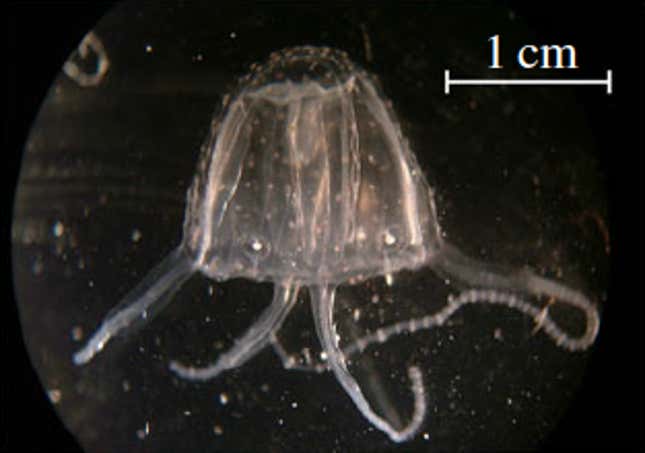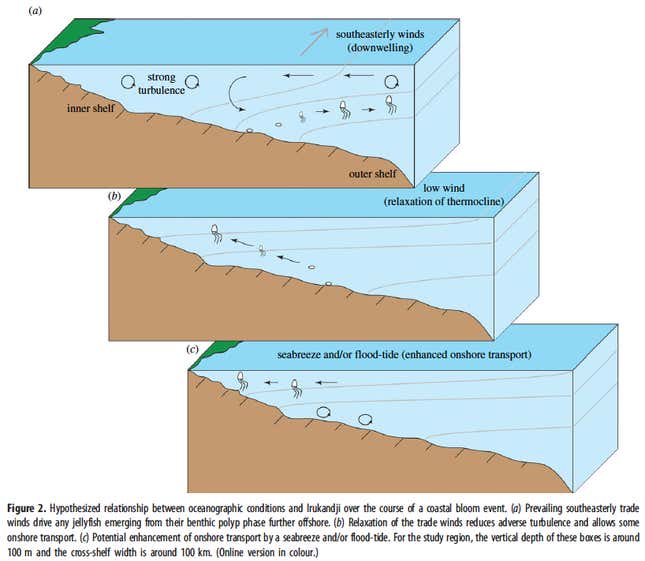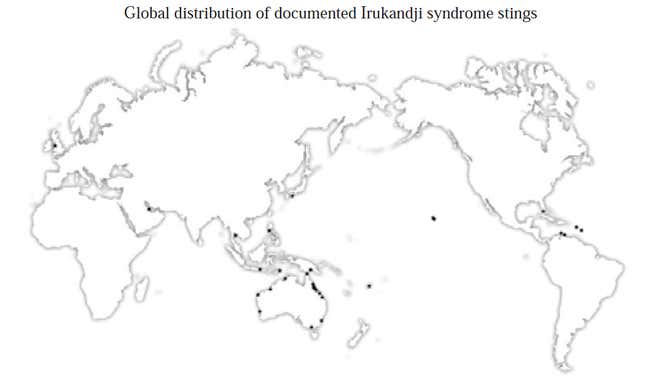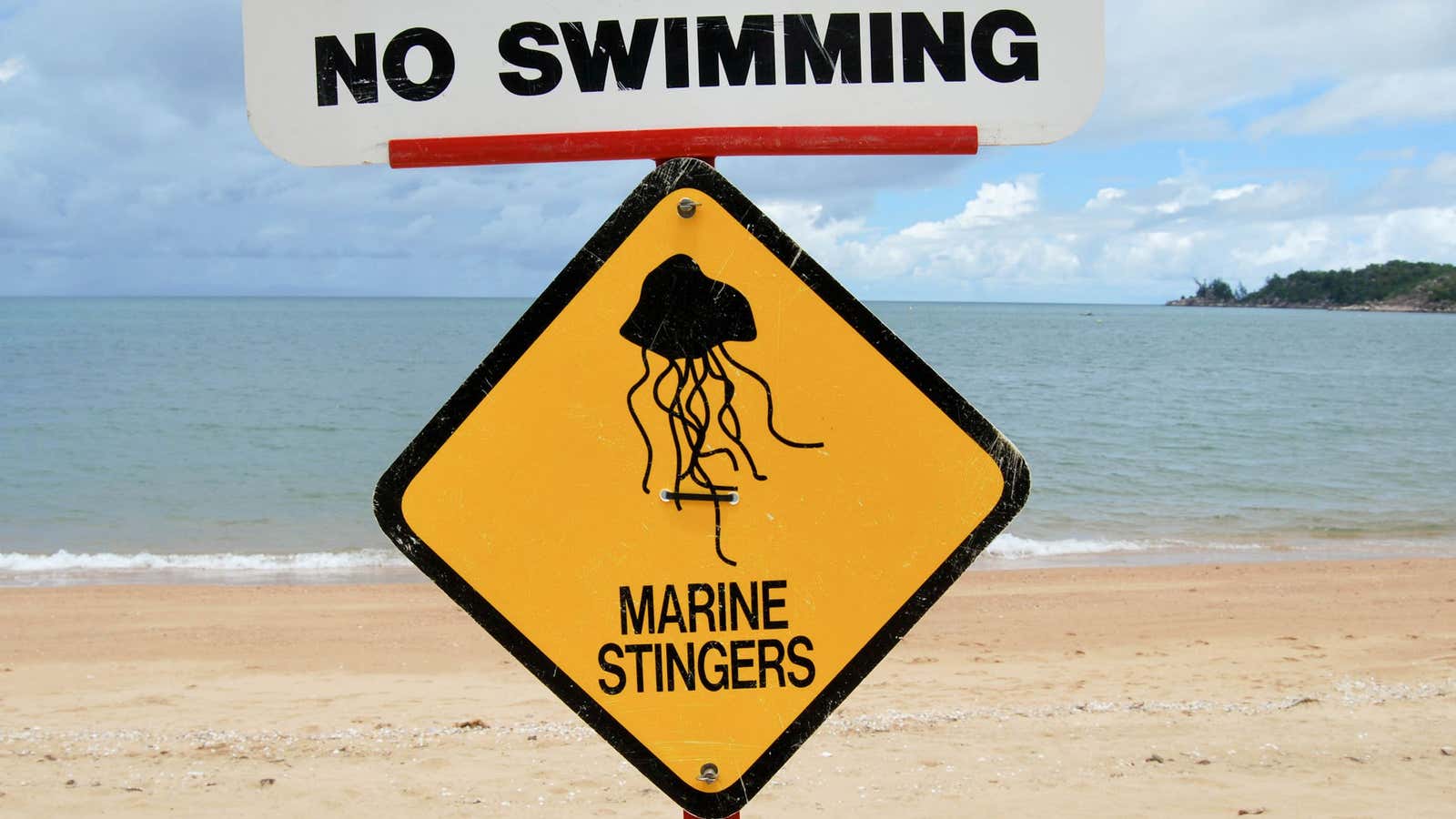The most confounding public health menace facing Australia’s tourism industry isn’t one of its famously big marine predators. It’s a tiny, see-through jellyfish. So small that no net can repel them, irukandjis cause an agonizing array of symptoms that one zoologist described this way: “On a pain scale of one to 10, it rated between 15 and 20.”

The problem isn’t just their venom, though. Irukandji swarms are hard to anticipate. As a result, the main way officials protect swimmers is by closing beaches only after someone is stung, a reactive approach that means irukandjis put 50 to 100 people in Australian hospitals each year. And while emergency treatment costs the government up to AU$ 3 million ($2.8 million) annually (pdf, p.215) in northern Australia alone, irukandji-fear likely costs the country a lot more than that in lost tourism revenue. While numbers are scarce, conservative estimates put tourism industry losses after two irukandji-sting deaths in 2002 at $65 million.
That may soon change, though. In a recently published paper (paywall), a team of researchers say they’ve finally found a way to forecast what conditions precede the swarms—a discovery that could help save scores of swimmers from excruciating, life-threatening stings and millions of tourist-industry dollars.
By analyzing sting data from hospital records and historical weather patterns, the scientists found that irukandji blooms, as swarms are called, seldom happen when southeasterly trade winds are blowing. When they die down, the irukandji risk goes up. This is probably because when trade winds kick up turbulence, irukandjis will tend to sink to the bottom, says Dr. Lisa-Ann Gershwin, one of the study’s authors and one of the world’s few experts on irukandjis.
“Irukandjis don’t like that because they have these monster-long tentacles and they’re as fine as cobwebs—so the turbulent water would just rip their tentacles right off,” says Gershwin. “Imagine if your arms were a hundred times your body height. You wouldn’t stick them out the window of a moving car.”

Though that hypothesis might sound cartoonishly simple, it’s likely to prove valuable to Australia’s beach destinations.
Take the experience of Queensland’s Whitsunday Islands, where one of the first well-publicized deaths from irukandji stings occurred, in 2002 (the other happened in the Great Barrier Reef, a few-hundred miles north).

Domestic holiday day trips to the Whitsundays increased 10% from 2002 to 2013, compared with a 24% increase for the rest of Queensland, according to Australian government data. In a recent survey of wealthy Australians, more than one-third of respondents identified fear of stinging as a key deterrent (pdf, p.9) to visiting the Whitsundays.
By cutting the incidence of stings, Gershwin and her colleagues’ advanced warning system for irukandji blooms should help allay some of these fears. Gershwin and her colleagues are confident that their forecasting model will help officials and tourism operators implement such a system.
That benefit could spread well beyond Australian shores. Adjusted for local conditions and geography, the model should work in other areas around the globe where irukandjis sometimes swarm, says Scott Condie, one of the paper’s co-authors. And though outside of Australia, few have ever heard of irukandjis, it doesn’t mean they’re not out there:

